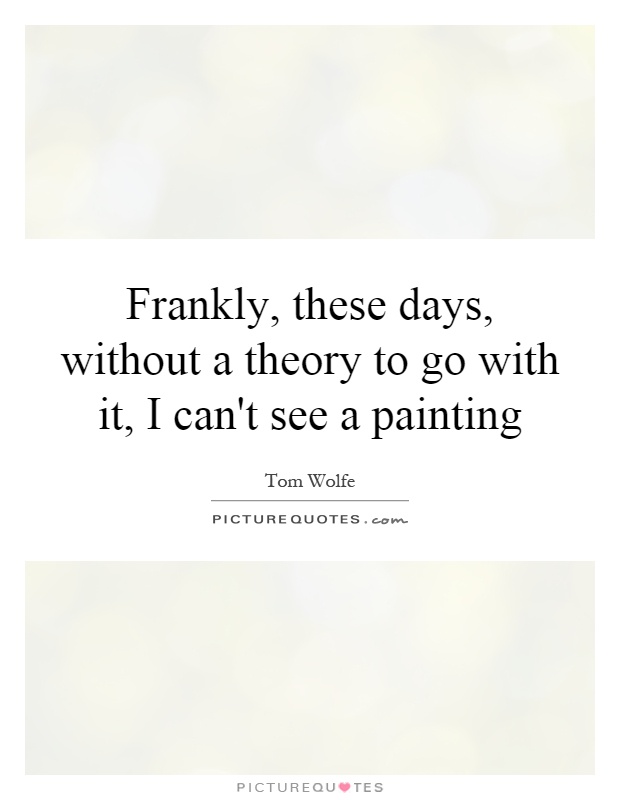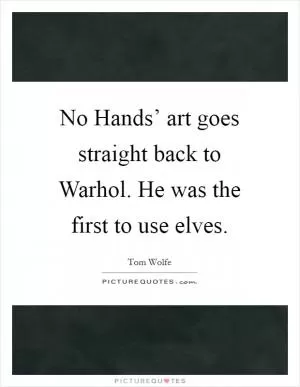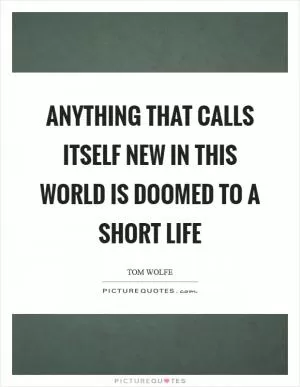Frankly, these days, without a theory to go with it, I can't see a painting

Frankly, these days, without a theory to go with it, I can't see a painting
Tom Wolfe, the renowned American author and journalist, was known for his sharp wit and keen observations on society and culture. One of his most famous quotes, “Frankly, these days, without a theory to go with it, I can't see a painting,” reflects his belief in the importance of having a deeper understanding and context when interpreting art.Wolfe was a proponent of the idea that art cannot be appreciated in isolation, but rather must be understood within the broader cultural and intellectual framework in which it was created. He believed that a painting could not be fully appreciated without a theory or concept to guide the viewer in interpreting its meaning and significance.
In the world of modern art, where abstract and conceptual works often challenge traditional notions of beauty and representation, Wolfe’s statement takes on added significance. Without a theory or framework to guide them, viewers may struggle to make sense of these challenging and sometimes perplexing works of art.
Wolfe’s own writing often reflected his interest in the intersection of art, culture, and society. In his book “The Painted Word,” he famously critiqued the art world’s obsession with theory and conceptualism, arguing that art had become more about intellectual posturing and academic jargon than about aesthetic beauty or emotional impact.
For Wolfe, a painting was not just a visual object to be passively admired, but a complex and multi-layered work that required active engagement and critical thinking. By insisting on the importance of having a theory to accompany a painting, he challenged viewers to look beyond the surface and delve deeper into the meaning and significance of the art they were experiencing.












 Friendship Quotes
Friendship Quotes Love Quotes
Love Quotes Life Quotes
Life Quotes Funny Quotes
Funny Quotes Motivational Quotes
Motivational Quotes Inspirational Quotes
Inspirational Quotes